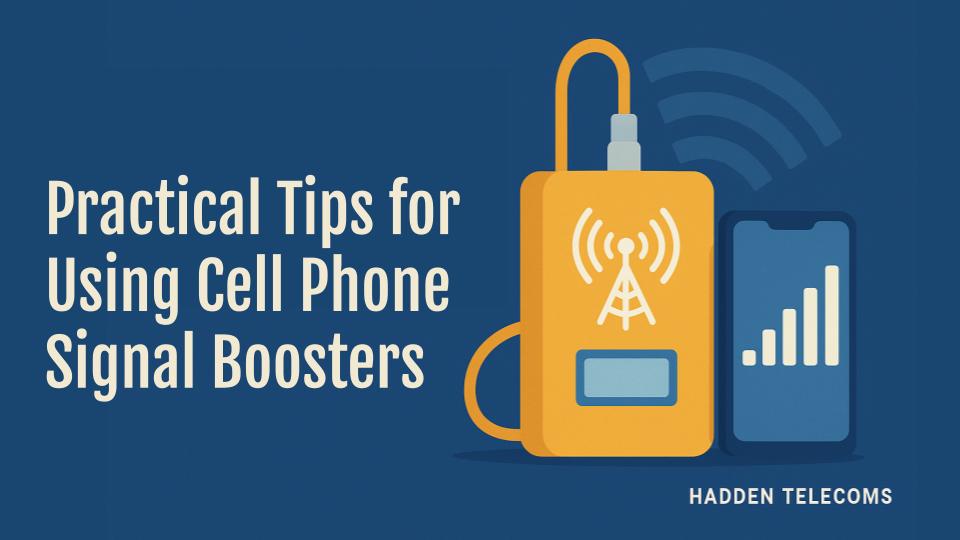As someone who has spent decades working in telecommunications and wireless engineering, I’ve seen firsthand how frustrating poor cell phone coverage can be – for individuals, businesses, and even mission-critical applications. Weak signals not only cause dropped calls and slow data, but they also create productivity challenges, safety concerns, and customer dissatisfaction. Over the years, I’ve specialized in cell phone signal boosters and coverage technologies, helping clients overcome these challenges and stay reliably connected.
🏢 The In-Building Coverage Challenge
One of the most common issues I encounter is in-building coverage. Modern construction materials like concrete, metal, and low-E glass are great for energy efficiency but terrible for radio signals. Even in urban areas with strong outdoor coverage, signals often degrade as soon as you step inside.
I’ve worked on projects ranging from small offices to large campuses where employees were unable to maintain reliable mobile connections. By deploying cell phone signal booster systems that capture the outdoor signal, amplify it, and redistribute it indoors, I’ve been able to provide consistent, reliable coverage.
👉 Tip: Always test the outdoor signal before choosing a booster. If you have at least two bars of 4G/5G signal outside, a booster will usually work well indoors.
🚗 Vehicle Signal Boosters
Another area where boosters make a huge difference is in vehicles. Long-haul truckers, field service technicians, and emergency responders often work in areas where coverage is patchy or nonexistent. Installing a vehicle booster system has allowed many of my clients to maintain critical communication while on the move, ensuring both safety and operational efficiency.
👉 Tip: For vehicles, choose a booster that supports multiple carriers if different passengers use different networks. Magnetic-mount outdoor antennas are great for cars, while permanent-mount antennas work better for trucks and RVs.
🛠️ Lessons Learned in Booster Deployment
Over time, I’ve learned that installing a signal booster isn’t just about placing a piece of hardware – it’s about understanding the RF environment.
Some key lessons from my experience:
- Antenna placement is everything. Mount the outdoor antenna as high as possible, facing the nearest tower.
- Use low-loss coaxial cables. Long or cheap cables can weaken signals before they reach the booster.
- Plan your indoor antenna layout. Larger buildings may need multiple indoor antennas for even coverage.
- Avoid oscillation. Keep indoor and outdoor antennas well separated (at least 20 feet vertically or 50 feet horizontally).
👉 Tip: If you’re not sure where the nearest tower is, use a mobile app like Network Cell Info (Android) or OpenSignal (iOS) to find tower directions and signal strength.
📡 Coverage Technologies Beyond Boosters
While boosters solve many challenges, they’re only one piece of the puzzle. In some cases, I’ve designed systems that combine boosters with:
- Small Cells: Carrier-provided mini base stations for localized coverage.
- Distributed Antenna Systems (DAS): Large-scale systems for airports, stadiums, or hospitals.
- Wi-Fi Calling: A practical backup where cellular coverage is weak but Wi-Fi is strong.
👉 Tip: For businesses with dozens or hundreds of users, consider whether a carrier-approved DAS may be more scalable than multiple small boosters.
⚠️ Top 5 Mistakes to Avoid When Installing a Signal Booster
Over the years, I’ve also seen plenty of failed installations. Here are the top mistakes to avoid:
- Installing without checking outdoor signal strength
Boosters can’t create signal out of thin air – they need a decent outdoor signal to work. - Placing indoor and outdoor antennas too close together
This causes feedback (oscillation), which reduces performance and may shut the booster down. - Using poor-quality or overly long cables
Signal loss in the cable can negate the benefits of amplification. - Not grounding the system
Proper grounding is essential for lightning protection and system reliability. - Choosing the wrong booster for the carrier or bands
Not all boosters support every carrier or frequency. Always verify compatibility with your service provider before purchasing.
👉 Pro Tip: If you’re unsure, work with a certified installer who can perform a site survey and recommend the right setup.
✅ Real-World Impact
One of the most rewarding parts of my work is seeing the real-world impact of these technologies. From enabling doctors to stay connected in hospitals, to helping logistics companies track fleets in rural areas, to ensuring families can make calls during emergencies, signal boosting has proven to be more than just a convenience, it’s often a necessity.
🏆 Final Thoughts
My experience with cell phone signal boosters has shown me how essential connectivity has become to modern life. Whether it’s solving an in-building coverage gap, equipping vehicles with mobile boosters, or designing large-scale distributed systems, the goal is always the same: reliable, secure, and seamless communication.
As wireless technologies evolve, from 4G to 5G and beyond – the importance of strong, consistent signal coverage will only grow. I look forward to continuing to help individuals and businesses overcome these challenges with proven coverage solutions.
